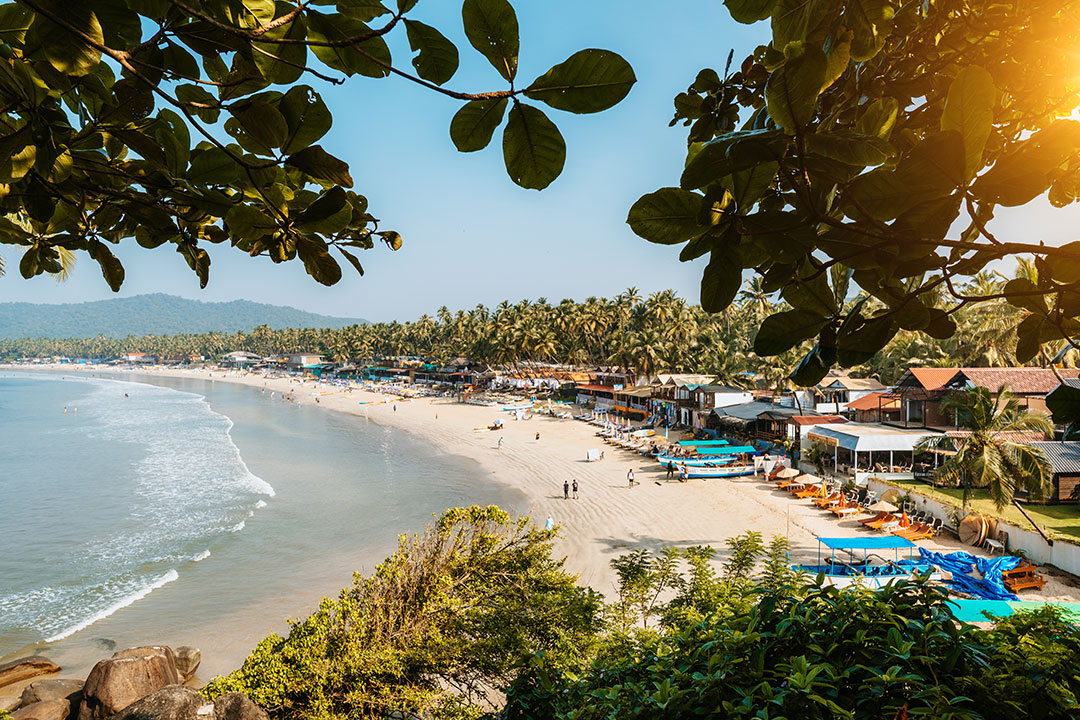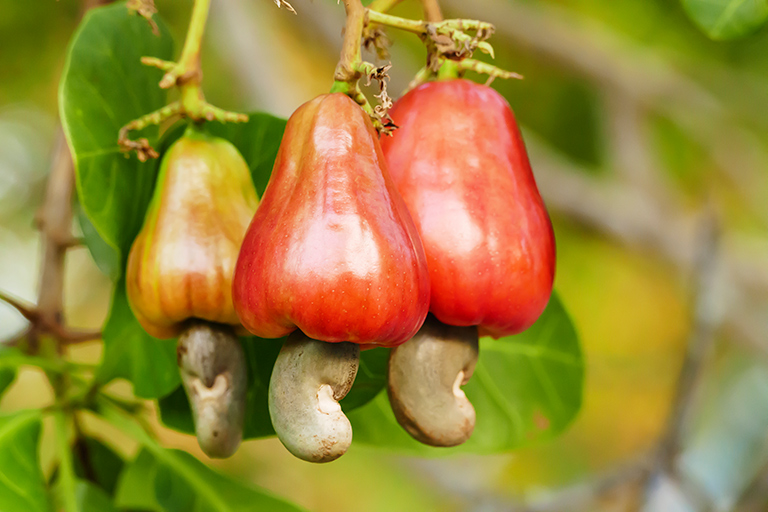The Barbosa Family “Cashew” Legacy
The de Lourdes Barbosa family, originally hailing from Raia, put down roots in Panaji Goa, India. Their Portuguese-era house at Altinho stands as a testament to this legacy. Of the two brothers, Mario and Anthony, the latter took up residence at Miramar, when he returned from Uganda in 1969, at the height of the Idi Amin regime, with a wife and three young girls in tow.
The de Lourdes Barbosa family, at that time, had large holdings of cashew plantations on the vast Kadamba plateau. Glynis’ childhood memories are redolent of visits to these plantations, watching cashew distillation on their property. She drew on these experiences to guide her and pave the way for the production of apple brandies at her farmhouse (which she set up with her late husband Dr. Rory Murphy in 2020) in Baldwin City, Kansas. Glynis Murphy is probably the first lady of Goan origin in the United States, and perhaps the first lady in Baldwin City, Kansas, to have her own distillery!


Kadamba Plateau
The Kadamba plateau stretches from Talaulim, Bainguinim, Old Goa, and Carambolim in the north to Azossim-Mandur, Neura, Batim, and Goalim-Moula towards the south.
Cashew season in Goa
Cashew Feni was awarded the Geographical Indication registration in 2009 as a specialty alcoholic beverage from Goa. Under this tag, cashew, the state fruit of Goa, is referred to as “Goa Cashew” (Kaju or Caju).
The word “feni” comes from the Sanskrit word “phena,” which means “froth.” Feni is known for the froth that forms when it’s shaken or poured. Feni was (and is still used to date) to treat health ailments like stomach aches, body aches, and joint pain. Its culinary applications include marinade for pork, along with garlic, ginger, Indian spices, and vinegar, as the base for the iconic Vindaloo curry.
The now flourishing cashew tree was introduced to Goa (formerly Estado da Índia Portuguesa) by the Portuguese, approximately 450 years ago (between 1560 and 1565). From there, it spread throughout Southeast Asia and eventually Africa. Initially intended for soil conservation and wasteland development through afforestation, its significant economic value remained unrealized for nearly a century, when the commercial potential of cashew nuts became apparent, gradually elevating its importance. The processing technology for Goa cashews has a rich history, dating back around 350 years. Distilling, we can safely say, is embedded in the Goan heritage.
From March to May, the lush hills are speckled yellow and red with cashew-apple laden trees. Late February to early April marks the peak of the harvesting season. Picking days are planned and cashew trails are organized as the fruit is separated from the nut. During the harvest, Cashew Feni distilleries stretching from Pernem to Polem and Valpoi to Velsao still make Feni the time-honored way — daily squishing tons of cashew apples between their toes. The trick is not to shred the fruit but to gently squeeze it open so the juices are extracted without releasing the acidic sap that is not desirable. Nowadays, the more commercial outfits, have replaced this process with mechanical pulpers and the hydraulic press.
As the days grow warm outside, the Goan cashew fruit and its distilled spirits in various avatars (first Niro, then Urrak, and finally Feni) are copiously consumed throughout the season, making Urrak, in recent years, a much-in-demand drink alongside its “feni” counterpart.
Cashew Feni is a triple-distilled spirit. The first distillate of the fermented neero is known as Urrak, about 15% alcohol (30 proof). Urrak is then mixed with neero in a proportion determined by the distiller, and redistilled to give a spirit called cazulo or cajulo (40–42% abv). Cazulo or cajulo is again distilled with Urrak to give a high-strength spirit called Feni (45% abv). Note that cazulo is generally sold as “feni.” Goa is home to almost 30,000 small distillers and six large ones in the Feni industry.
There’s also a semi-mythical Feni called “Kõlléãcho’, or fox feni. Our Goan ancestors trusted it as a sure cure for tuberculosis, bronchitis, and other respiratory illnesses. The word “kolleacho” refers to a fox. It was said that this Feni was one of the hardest to brew.
Café Conserva, or Coffee Feni, is another lesser-known Feni. It was once a dessert liqueur, served after local Goan weddings.

The distillation process
In the traditional method, only tree-ripened cashew apples that have fallen are picked for the crush. Early afternoons are when “cazkars,” workers, organize themselves to methodically comb the orchards for naturally fallen cashew apples. Covered from head to toe to avoid insect bites, they resemble ninjas. “Cashew picks” or “kaantov,” a spike attached to a light stick, helps them to spike fallen cashews into the collection basket. Tree-ripened fruit that naturally fall are full of sugars and low in the astringent sap, so make the best Feni.
The cashew apples are de-seeded and then dropped into the stomping area to release their juices (reminiscent of the wine stomping practices in Europe). This area is called a “colmbi” and is usually a rock cut into a basin shape. Stomping has now gradually been replaced by the use of a press called a “pingre” (cage). The first extract “Neero/Niro” makes for a refreshing drink. Men work in pairs and trample fruit to a pulp. The pulp is then made into a mound and trussed together with a vine (nudi). Heavy rocks are placed on top to extract the remaining juice out of the pulp overnight.
The most iconic and fundamental focal point, in every distillery, is the distillation pot. In the old days, these were made of mud. In recent times, however, the more robust and easier-to-source copper pots are used. Unlike the trend in the West to name the distillery pot, in Goa they are just called “Bhann” (cauldron). Brought out of storage at this time of the year, the first task for the workers is to patch up the old furnace with fresh clay collected from termite mounds Known as “rounechi mati” or ant hill mud, it is a fine clay that binds well.
The next task is the fitting of the “nollo” or conduit between the distillation pot and the condensation coil. It is imperative that this is correctly fixed, at the appropriate angle, so that the vapors travel smoothly to the next stage. The traditional way of doing it is by using the hollow of bamboo. A set of red-hot metal rods are used to burn a hole through the segment of the bamboo. Burning a hole chars the inner sides of the bamboo, not just curing the inside, but also acting like a rudimentary charcoal filter. Charcoal filters generally adsorb impurities from the vapors as they pass through. After three days, the surface is covered and sealed, using natural and eco-friendly materials.
The juice is strained and allowed to naturally ferment in earthen pots. No nutrients, catalysts, or artificial yeasts are added, and nature takes over from where man left off, converting natural sugars into alcohols.
After fermentation, when the wash stops bubbling, it is ready for distillation. This crude cashew wine is transferred into the pot still. Traditionally, the alcohol vapors were condensed in an earthen pot, by constantly pouring water over the “launi” with a coconut shell ladle. Now a copper coil is immersed in a water tank to do the same. The vapor phase of the alcohol is the most crucial. While the copper coil removes unwanted sulfates, the earthen pot imparts a beautiful earthy note to the spirit. In this distillation process, the low-strength wine is converted into a high-strength alcoholic spirit, that we could call an Urrack, Cazulo, or a Feni.
The first distillation is known as Urrack (14-16% alcohol by volume), a lovely cooling drink, and is velvety smooth, so lovely that the drinker often mistakenly over consumes, and what follows is described as a velvet glove!
What is interesting and unique about this distillation process is that each distillate is re-distilled with fermented juice in carefully guarded proportions, to give it not just a higher strength alcohol but a more flavourful next distillate.
The second distillation is the Cashew Feni that is sold today. However, in olden times, Feni was the third distillation; it was considered to be too strong to drink, and so it was discontinued. Cazulo is now sold and accepted as Feni. What is unique in Feni is that, unlike other alcohols, it is directly distilled into 42.8% alcohol. Cashew Feni is seasonal, distilled only from late February to mid-May. It is highly dependent on the fruiting of the season. All Cashew Feni now available is double-distilled.
Over the years, artisanal Feni has also been brewed by the new age companies that have set up base in Goa, but the traditional Goan Feni still rules the roost!